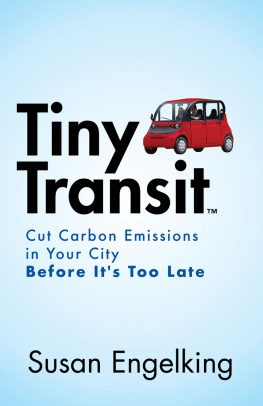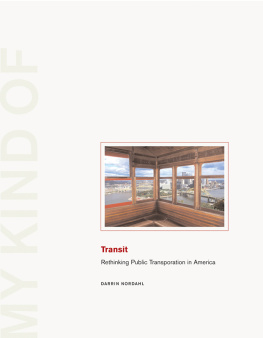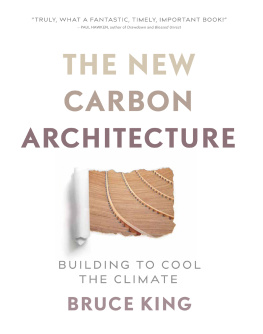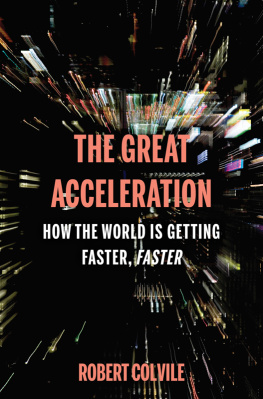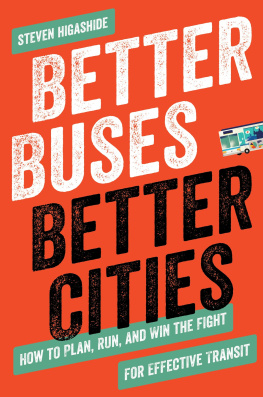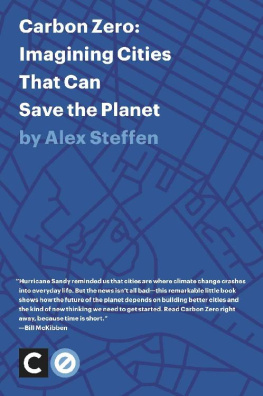The spirit of Greta Thunberg pulses through these pages. More than a how-to guide, Tiny Transit is a joy to read.
Amory Lovins famously said, Energy conservation isnt a free lunch. Its a lunch we pay you to eat! And now Susan Engelking has served up a banquet in her inspiring new book, Tiny Transit .
Engelking shows how innovation is already blooming coast-to-coast as cities open the way for small, low emission vehicles to expand mobility, reduce congestion, and advance safety all at a fraction of the cost of conventional infrastructure.
This is a real page turner. I have never seen the incredibly complex subject of microtransit laid out there so succinctly.
Just imagine if all of the public parking for cars were turned into actual parks, or parking and lanes for cleaner, greener mobility options. Tiny Transit encourages readers to see their cities through a different lens.
Susan Engelking takes readers hands and walks them to a better future.
With twenty more initiatives of this scale, we can tip the course of history.
As young Greta Thunberg urges us to action on the climate crisis in general, Susan Engelkings Tiny Transit strategy is one concrete solution to the burgeoning crisis of car, bus and truck-choked cities.
Author, Impact Imperative: Innovation, Entrepreneurship and Investing to Transform the Future
Imagine what is possible when children are encouraged to become climate innovators.
Tiny
Transit
Cut Carbon Emissions
in Your City
Before Its Too Late
Susan Engelking

NEW YORK
LONDONNASHVILLEMELBOURNEVANCOUVER
Tiny Transit
Cut Carbon Emissions in Your City Before Its Too Late
2020 Susan Engelking
All rights reserved. No portion of this book may be reproduced, stored in a retrieval system, or transmitted in any form or by any meanselectronic, mechanical, photocopy, recording, scanning, or otherexcept for brief quotations in critical reviews or articles, without the prior written permission of the publisher.
Published in New York, New York, by Morgan James Publishing in partnership with Difference Press. Morgan James is a trademark of Morgan James, LLC. www.MorganJamesPublishing.com
ISBN 9781642796827 paperback
ISBN 9781642796834 eBook
ISBN 9781642796841 audiobook
Library of Congress Control Number: 2019943707
Cover and Interior Design by:
Chris Treccani
www.3dogcreative.net

Morgan James is a proud partner of Habitat for Humanity Peninsula and Greater Williamsburg. Partners in building since 2006.
Get involved today! Visit
MorganJamesPublishing.com/giving-back
For Tyler, Jack, Courtney, Dane, and Nan
Look at the world around you. It may seem like an immovable, implacable place. It is not. With the slightest push in just the right place it can be tipped.
Malcolm Gladwell
The Tipping Point: How Little Things Can Make a Big Difference
Foreword
Y oung people today want to live near urban centers, to be part of vibrant communities, to be lifelong learners, and to experience life. They are a sharing generation that looks for new, less expensive, sustainable lifestyle options from cars to homes.
You bet young adults are deeply concerned about climate change. They are conscious of their carbon footprints, and they truly want to leave this planet better than they found it.
Imagine the world this fresh generation foresees, where people can get everywhere they need to go within our communities using environmentally friendly, low-cost, safe options.
This is not a dream. Innovative cities from California to Georgia are creating networks with off-road paths for low speed electric vehicles without huge infrastructure costs. There is an emerging groundswell of people who see the practicality and advantages of this approach. With low-speed networks, cities can become truly multimodal so that people can choose and blend their best options based on their budgets and where they need to go.
Tiny Transit offers an effective and logical way to respond to what young people want. Low-speed networks create possibilities for people to get better jobs, to go to classes, to go places easily and safely, and to live without the anxiety of extreme financial stress. Susan brings this movement directly to you. She walks you step-by-step through how to introduce this new mobility alternative, help people envision change, create the infrastructure for less than you might imagine, and even melt opposition. With low speed networks, cities can become truly multimodal so that people can choose and blend their best options based on their budgets and where they need to go.
What I particularly like about this book is that air quality is merely the starting point for learning so much more about the benefits of Tiny Transit TM . I hope city leaders everywhere will join in this exciting new approach to creating more livable communities.
Nan McRaven, EdD
Chapter 1:
Introduction
T his book is for cities that want to cut carbon emissions.
It is not a book about climate change. There are excellent books and reports on that subject.
Tiny Transit is a how-to guide for cities, Councils of Governments (COGs), Metropolitan Planning Organizations (MPOs), and other regional planning organizations that are searching for ways to help their member cities improve mobility while reducing carbon emissions quickly and inexpensively.
COGs and MPOs are how cities, towns, and counties are organized to coordinate in their collective best interests on transportation, air quality, economic development, and more. You are their resource on matters of mobility, air quality, and carbon emissions, especially for smaller cities that dont have this expertise within their staff. They look to you for expertise and guidance. Thats why I am speaking directly to you.
Your role is vital. There are 35,000 cities and towns in the U.S. They are too numerous for me to reach them all directly with this how-to guide. You are the link, the key to introducing to your cities the low emission mobility alternative set forth in this book.
The Environmental Protection Agency (EPA) and U.S. Department of Transportation see this tiered relationship with your cities similarly. Thats why these agencies direct resources to organizations like yours to improve air quality and mobility.
In this book, you will learn about a proven, clean, low-cost, fun mobility alternative that cities across the U.S. can quickly implement to dramatically reduce carbon emissions a public health hazard and the number one cause of climate change and build a groundswell of public awareness and support in the process.
LEAN Networks and Low Emission Modes
Let me explain the key terms you will encounter in this book.
Throughout, you will learn about LEAN networks. The term LEAN is derived from Low Emission Alternative Network . LEAN networks are the infrastructure that provides safe passage for a variety of low speed, low emission, low cost modes. LEAN networks are specifically designed for Neighborhood Electric Vehicles (NEVs), scooters, pedicabs, bicycles and pedal assist bicycles, and other low speed modes.

